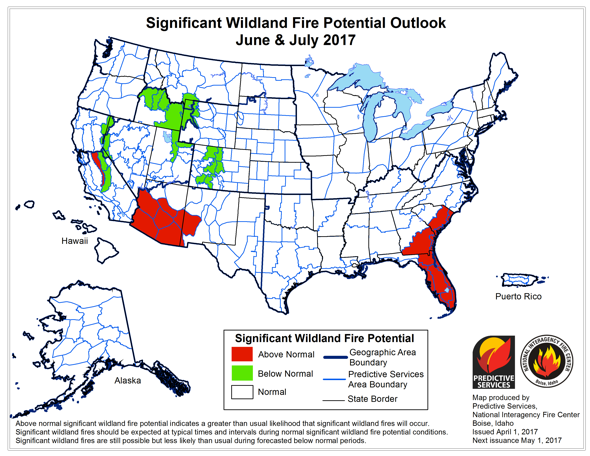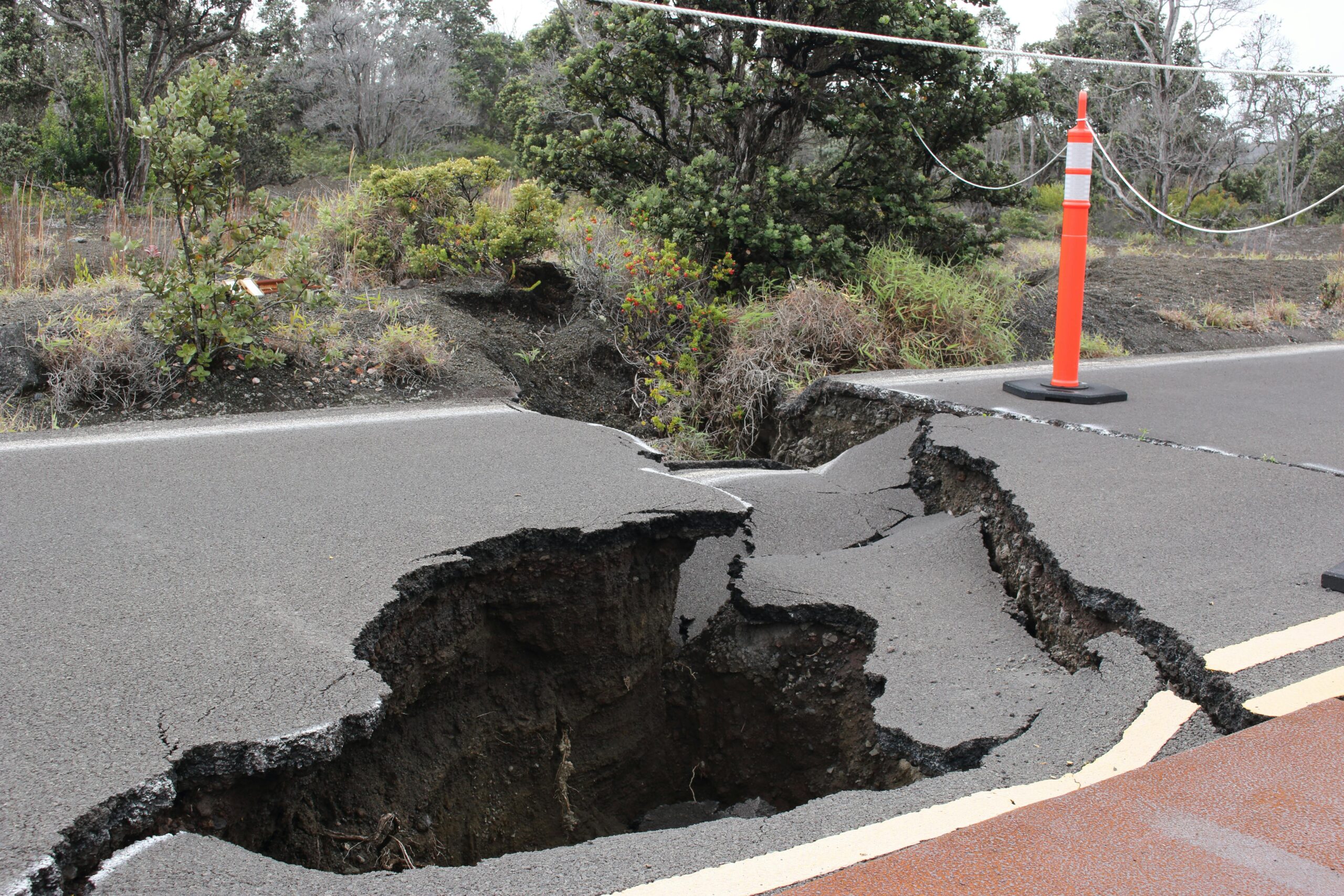This year has resulted in above-average wildland fires throughout the United States, with over two million acres burned since Jan. 1, according to the National Interagency Fire Center. In contrast wildfires burned only 289 thousand acres by this time last year. The acres burned between Jan. 1 and March 27, 2017 is over 10x the decade’s average, as illustrated in the chart below:
Drought combined with warm and windy conditions throughout the southeast U.S. and Southern Plains (particularly Oklahoma, Kansas and Texas) facilitated the majority of these wildfires. The following wildfire forecasts, broken down by region, comes from research from the National Interagency Fire Center.
Alaska: The outlook for Alaskan wildfires is normal through July. While the state has experienced dry conditions, cold winter temperatures have maintained snowpack and prevented heightened wildfires. Alaska will likely experience above-average temperatures throughout. Western Alaska should expect to see low precipitation, while central/eastern Alaska will experience normal precipitation through July.
Northwest: Normal wildfire activity is expected for Washington and Oregon through July. Temperatures in the majority of the region were below average throughout the winter. Snow accumulation in Washington and western Oregon is higher than in 2015 and 2016.
Northern California + Hawaii: Most of Northern California and Hawaii can expect an average wildfire outlook. The Big Island of Hawaii may experience slightly above-average fire activity. The most eastern portions of Northern California will have below average wildfire activity due to record snowfall in the area. Both Northern California and Hawaii will have average precipitation through July.
Southern California: The significant wildfire and temperate forecasts for most of Southern California is normal. The Sierra Foothills may experience higher than average wildfire potential, and the High Sierras may experience lower than average wildfire potential through July. Lower and middle elevations will have lower than average precipitation.
Northern Rockies: The region is forecasted to have average large fire potential. Yellowstone National Park will have a lower wildfire outlook. Average precipitation is also expected. Mountain snowpack in the region has maintained late into the spring, helping to reduce wildfire risk.
Great Basin: Following increased precipitation through the winter, the Great Basin Region can expect normal wildfire outlook through July. Wildfires could be caused by an increased grass crop in the lower elevations, which may extend into higher elevations than normal. Temperatures through July will likely be above average, and precipitation will stay near average.
Southwest: The region is forecasted to have above average wildfire potential through July. The greatest fire potential is expected to travel northwest (from southwestern Texas to northwest of the Continental Divide) through June. The monsoon season is expected to begin either early or on-time during July.
Rocky Mountain: Normal wildfire potential is expected in the lower- and mid-elevations of the Rocky Mountains. Lower than average wildfire potential is expected in the high elevations due to a significant snowpack (except in the Black Hills of South Dakota). The entire region will experience average precipitation during the period. The south and west will experience above average temperatures, while the north and east will experience normal temperatures.
Northeast + Mideast: Average significant wildfires are forecasted for the eastern U.S. through July. The southern and coastal areas will experience above-average temperatures, while the inland areas will experience normal temperatures. The Great Lakes region will likely experience more precipitation than average, while the Mid-Atlantic region will experience less.
South / Southeast: The extreme wildfire events in Florida are expected to ease with the onset of the June rainy season. The region’s coastal areas will experience above normal significant fire potential. The more inland areas will experience a below-average large fire outlook. Besides South Florida, which has potential to have significant precipitation, the summer months will bring warmer and drier than average conditions are forecasted throughout the region.





